Test Drive Has Been Trying to Find Paradise for 35 Years. But One Installment Already Took Us There
There hasn't been many series so persistent in their attempts to achieve gaming paradise throughout over three decades and with the help of a dozen teams. Eden Games briefly achieved that with Test Drive Unlimited.

On the pages of history, winners – the greatest and most charismatic individuals – are etched in gold. Even without being a big fan of motorsports, we are likely to recognize names of Colin McRae, Sebastien Loeb, Ayrton Senna, Stephane Peterhansel or Jeff Gordon. The great ones have the honor of holding a special place in the memories and hearts of fans.
The same goes for racing games. Although they have been with us for decades and are inseparable from the history of the industry, the list of really famous titles turns out to be relatively short. Most will be able to say something about the brands that over the years have built their reputation and gathered a loyal following. Like Gran Turismo, Forza Motorsport, or Need for Speed. Some will recall with nostalgia cycles such as Burnout, Wipeout or FlatOut, which achieved everything, only to suddenly disappear for one reason or other.
A room of oblivion awaits those who fought for fame and recognition, but never reached the top position. Visited by the few, genuine genre maniacs, connected with the given game by warm memories related to childhood or a specific period of adult life. Destruction Derby, RalliSport Challenge, Project Gotham Racing, Midnight Club. In this group of relatively successful productions and series, there is one whose story seems exceptionally interesting.
After all, where else would we find a franchise that has been trying to become the boss of racing games for no less than four decades, in the process being created by more than a dozen development studios? Here’s the story of the Test Drive series, which for many years tried to reach the gates of gaming paradise, only to eventually find it on the beautiful, Hawaiian island of O’ahu, at the launch of Unlimited.
Ticket to paradise
Test Drive is a video game industry phenomenon After all, the series debuted in 1987, and this year we will receive its next installment – Solar Crown. Over the years, the franchise has experienced a number of metamorphoses and longer moments of hiatus. But let's leave the past millennium behind and move to the late 20th century. The times of the paradise of O'ahu island and Test Drive's offensive against the wallets of racing game fans.
The offensive was broad and brought together the full-fledged installments of the series as well as spin-offs inviting off-road competition and new areas. In three years, from 1997 to 1999, three productions from both branches of Test Drive hit the market.
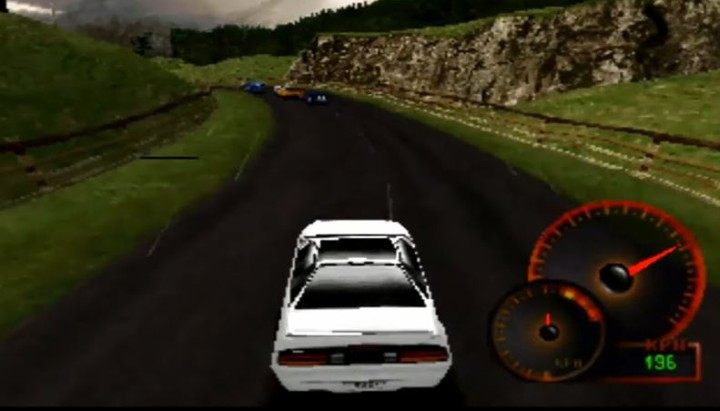
The brand tried to aggressively cut its way to the top among the true giants of the genre. Unfortunately, ambitions were not followed by solutions, so Test Drive wasn't able to put up a real fight with the leaders. Productions received with moderate enthusiasm by reviewers resembled sports cars that were fast but didn’t know how to go into corners. It sounds bizarre in the context of the series, which allured with a Dodge Viper on the covers, but then again the Viper, apart from looking sexy, was arguably not the most sophisticated sports car ever. In every part, there was something that didn't work properly. Good ideas were spoiled by technical problems, such as lousy animations or a lot of bugs.
At the end of the 20th century most of the productions under the Test Drive brand was the work of the freshly established Pitbull Syndicate studio. It was the developer founded by former Reflections employees, responsible for the Driver series. The developer have tried to win the hearts of players ten times during its twelve years of activity. However, none of their projects turned out to be groundbreaking. Even Wheelman, which generated no small interest before its release, ultimately ended up as a forgotten, mediocre game.
At the turn of the century, the brand went under the supervision of Infogrames. A breath of fresh air had been expected by the fans of the series. After all, a new publisher could cause a sudden increase in quality and an introduction into the elites. On the other hand, it could also have been an insignificant installment followed by nothing revolutionary.
Turbulent landing on paradise island
Earlier unsuccessful attempts didn't go unnoticed. The publisher, being aware of the problems in throwing a real challenge to other brands, decided to change the strategy and offer something different. Every time, something different. The next five games under the Test Drive label had very little in common indeed. The series resembled like a blindfolded chimpanzee on a shooting range.
Fans of the Test Drive, entering the new century, had to open up to new experiences and be ready to broaden their horizons for sure. They got both titles focused on simulation of driving, as well as pure arcade games. Some of them were about pure competition in the world of motorsport. Others aimed at illegal racing on city streets and some offered joyful destruction derby. If the works on the PC and console versions of Test Drive Cycles hadn't been canceled, we might have even been writing today about attempts to reach out to fans of motorcycles. Bikes, however, came only on Game Boy Color.
Despite the lack of a specific identity and classification, the series persisted and didn't end up covered in sand. Developers hired by Infogrames proved that they were able to realize their objectives and maintain a solid quality, which was positively received by reviewers. It was impossible to dethrone the best games in the genre and conquer the market, but they managed to cut a nice slice of the cake.
Test Drive managed to take a comfortable place in the hearts of Sega Dreamcast console owners, where Test Drive: Le Man, also known as Le Mans 24 Hours, received very high ratings. The attempt to portray long-distance races was successful and delighted reviewers around the world. On this occasion, Melbourne House set a high bar with its graphic design and attention to detail. Angel Studios also made good on their task, using the experience gained from the development of Smuggler's Rune. The developer decided to bet on an off-road formula of competition. Test Drive: Off-Road Wide Open didn't come close to ideal, but it found its fan base.
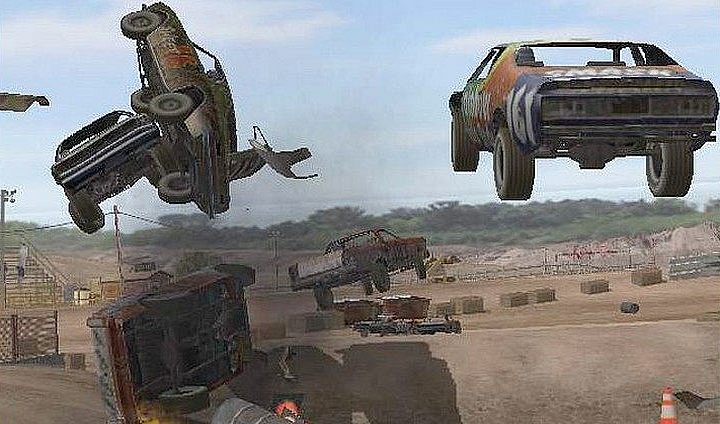
Actually same thing was with the game Test Drive: Eve of Destruction, which can be called the spiritual successor of Destruction Derby. This title, by the way, shows how open was the new publisher to fresh ideas. In an interview conducted by John Carswell from Game Chronicles, producer John Schneider from Monster Game shared an interesting story about the of Eve of Destruction's beginnings.
During the production and testing of our last product, NASCAR: Dirt to Daytona, we noticed that many of our multiplayer sessions ultimately became huge crash-fests. In some cases, the winner was the only one left with a moving car. We thought, “Wouldn’t it be great if we developed a game where the primary goal was taking out the other cars?” So, we went out and did just that.
It wasn't the mythical Holy Grail, but it fit well with the series' situation. Test Drive consistently marked its presence in the market, and even in the consciousness of many players. But in general, the series was still stuck somewhere "on the roadside." Test Drive wasn't an example of a perfect series that could be discussed for hours. It didn't take first place in rankings and charts. It didn't generate excitement when the next title in the series was announced. Every installment was operating somewhere in the background, providing a solid dose of entertainment to racing fans whenever they needed it. And so it went for fifteen years. However, things were about to change.
Everyone wants a paradise
Test Drive Unlimited arrived on the Xbox 360 in 2006. Then, after several slips and months of waiting, the game was released on PC and other consoles. The tone of both of the above-mentioned reviews reflects the overall reaction of the industry and players to the work of Eden Games. After a long period of more or less successful attempts, the franchise shifted up a gear and reached the level it had been aspiring to for years. Finally, persistence paid off, and the series received its first moment of glory.
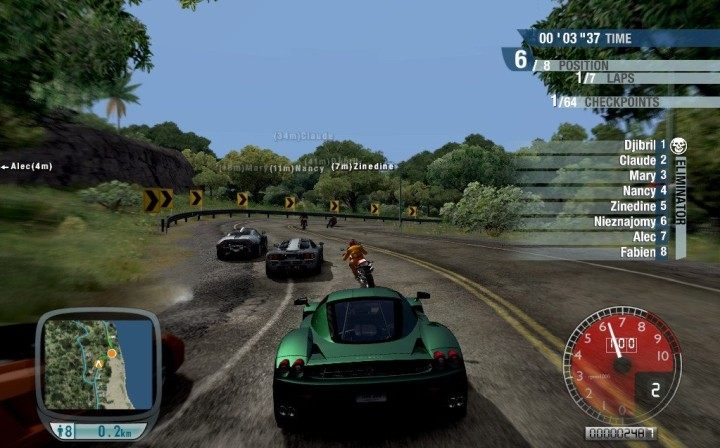
This time, the courage to try something different and go outside the box (a feature of the series for so many years, but not particularly successful so far) – worked fully. Test Drive Unlimited met the expectations and needs of players in the first decade of the 21st century. It was a racing game designed and built with the idea of harnessing the emerging technological capabilities, including rapidly developing online play options on consoles.
The beautifully recreated island of O’ahu in Hawaii was waiting for explorers behind the wheels of 90 licensed cars and motorcycles, who could indulge in various activities. Open to free-roaming, the captivating map absorbed the players completely. At the heart of the game was a multiplayer gameplay module merged with the single-player mode. Whenever one felt like it, they could take on a network challenge, compete with others, or challenge a random user by flashing headlights. The ingeniously designed module provided loads of fun, and at the same time served as an excellent advertisement for the promoting the capabilities of the Xbox Live service! Not only in regard to online competition, but also to continue playing long after the purchase thanks to further digital add-ons.
These features of the new Test Drive attracted attention and often constituted the central point of interest for players and media. It was confirmed in an interview given by producer Ahmed Boukhelifa to the Shacknews editorial team at E3 2006, in which he presented the key elements of the project.
Shack: Tell us about the multiplayer aspect of the game. How does it work? Meaning, how do I challenge another player for a race, what else is there to do besides race other drivers, etc. Also, tell us some about the island the game takes place on.
Ahmed Boukhelifa: The multiplayer functions in the game are truly next-gen. When you're online and out cruising on the island, you'll be able to locate other racers by the red dots on the Oahu map. Those dots are other racers and where they are on the island. You can challenge, or be challenged, by anyone on the island or, additionally, if you want to set preferences so that you only see a cars/racers that match your set preferences, you are able to do so.
Test Drive Unlimited was supposed to be next-gen and it kept those promises. This idea guided the production from the very beginning. Atari, i.e. the publisher, was counting on this, as did Microsoft, which saw Unlimited as a potential challenger of Sony and their PlayStation 3. For Atari, it was perhaps the most important project back in the day. During that period, the publisher was dealing with major financial problems and wasn't doing very well on the market. In a way, they went all in with the new iteration of the series, which, incidentally, the company representatives didn't hide in interviews.
They officially admitted that the production process of Test Drive Unlimited began in 2003 and consumed an amount between 15 and 25 million dollars. Most companies, especially those in a similar (difficult) financial situation, would rather aim for a quick attempt to recover costs. Atari, however, surprised everyone by postponing the premiere several times and giving the time and resources needed to refine the game for computers and older consoles. No one seems to have that kind of integrity nowadays, huh?
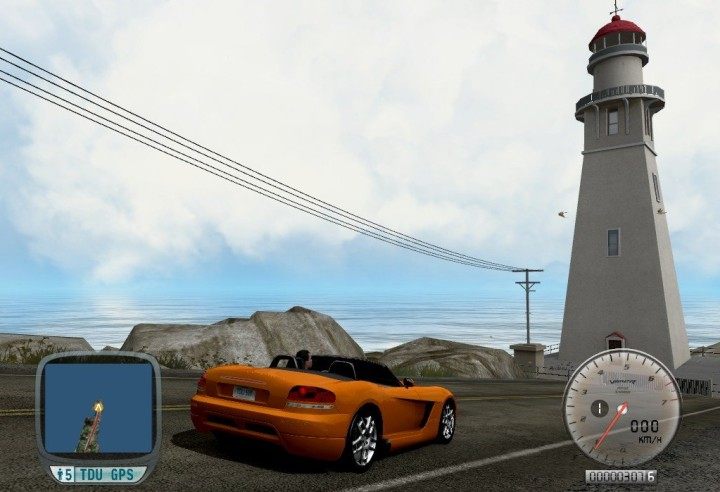
Vice President for sales and marketing at Atari, Nique Fajors, explained the policy change in an interview for the "New York Times" as follows:
Frankly, we've been a poor-performing company for far too long. We have not delivered to our stockholders, to our retail partners or, most fundamentally, to gamers for far too long. We're hoping that Test Drive really helps bring credibility back to the brand.
From a product quality standpoint, you should know that we have delayed this game four times. The old Atari would have shipped it in the launch window or certainly in the March time frame regardless. The new Atari would certainly have loved that revenue sooner, but now the viewpoint is that we will ship it when it's ready and not before, which is what is done for all the truly great products.
Microsoft also believed in Unlimited, often citing it. During the E3 in 2006, they promoted their Xbox Live service with a demo of this game. The producer needed games that could promote the online capabilities of the new platform, and Test Drive by Eden Games, with its extensive network module and addons both available for free and for purchase, represented a new reality in which players would regularly use the Xbox Live service!
While mentioning Test Drive Unlimited, we often forget about its significant role in introducing players to that new reality. A world where digital distribution played an increasingly important role each year, and couch multiplayer gave way to exciting online battles. The change that this title heralded and brought forth was seen clearly by the developers and publishers, leading to a far-sighted promotion and sales policy of the game. One of the symbolic decisions during that period was to change the initial price for the release in the United States to 35 dollars, rather than the standard 50-60 bucks.
In this way, they tried to reach a more developed user base of Xbox 360 in the USA. Atari, which at that time was a new and risky player, planned to quickly make up for losses associated with a 30% lower price by offering paid add-ons to Xbox Live Gold subscribers.
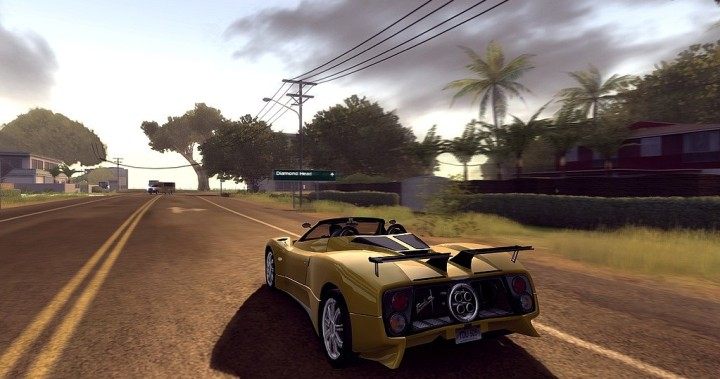
Next-gen racing game
Test Drive Unlimited has been remembered in the industry annals as one of the best racing games of the first decade of the 21st century. In the memory of many players, the landscapes of O'ahu, memories associated with the freedom offered by this title and the specific atmosphere of races on the paradise Hawaiian island still remain today. In its time, this production played a significant role, not only because of the presented quality.
It was one of the first next-gen projects in this genre, which made such inventive use of available technological capabilities and the rapid development of network services. A title that skillfully combined single-player and multiplayer worlds, while at the same time confirming to producers and publishers the importance of the distribution model including downloadable add-ons.
Was such a project destined for success and did the creators simply do their job? Actually, everything could have turned out very differently. Instead of Hawaii, we could have ended up on the west coast of the United States, where it would probably be harder to make similarly funky memories.
At the beginning of the 21st century, Pitbull Syndicate studio also worked on the next Test Drive. This production was supposed to be an ambitious approach to the racing game genre, offering, among others, an open world and allowing the player to explore the alleged city of angels. As a result of various factors and financial problems, a change of publisher took place, and the game itself, after slight modifications, was finally released on the market as L.A. Rush. The title received quite good reviews, but didn't rise above mediocrity.
It definitely wasn't a next-gen project. No one, after all, talked about it in this way. The route chosen by Pitbull Syndicate was not the road to paradise. This road, however, was found by the inventive team of Eden Games.
Ahmed Boukhelifa: Our goal was to create the ultimate racing game for next-gen gameplay. Test Drive Unlimited is a great hybrid of both concepts mentioned, as it's as much a lifestyle/sim game as it is an awesome racing game. We started out with our ideal place to race, added our ideal racing set up and also wanted to create a game where your character was as much alive as the gamers playing the game. We are confident that what we're delivering to the market is a seriously fun and addictive title that blurs several genres of games and becomes a must-have title for any gamer.
In this way, Test Drive instantly climbed to the top and added a few sentences to the history of racing games. Is this the last huge success of this brand? Time will tell. For sure, the upcoming Solar Crown will fight for players' attention. In fact, just like all previous installments of the series released over the next four decades of the brand's presence on the market.